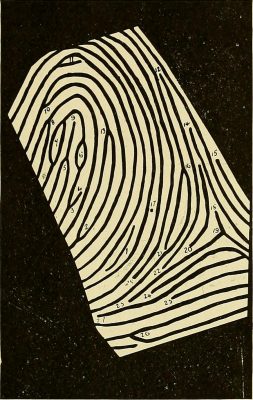Wouldn’t it be nice if there was someone in charge, someone who understood how it all fitted together? Even though we know that it isn’t possible, perhaps some part of us still longs for a real-life omniscient narrator. That’s part of the appeal of big, bold, transdisciplinary books like Jared Diamond’s Guns, Germs and Steel: The Fates of Human Societies (subtitle: ‘A short history of everybody for the last 13,000 years’), and, most recently, of Israeli historian Yuval Noah Harari’s blockbusting Sapiens, published in Hebrew in 2011 and in English in 2014. Sapiens has sold over a million copies and garnered praise from big hitters as diverse as Barack Obama, Bill Gates, Chris Evans and Lily Cole. Five years on, it’s still a best-seller: Number 23 in Amazon’s overall books ranking, and Number 1 in several smaller categories such as ‘Civilisation and Culture’. According to Nielsen BookScan, which tracks book sales across the book market, it sold over 300,000 copies in 2018 and ranked twelfth in the year’s bestsellers. Homo Deus followed, published in English in 2016; its sales figures were approaching the 1 million mark when Harari’s latest offering, 21 Lessons for the 21st Century, appeared in August last year.
Sapiens has a Diamond-esque, humblebrag subtitle – ‘A Brief History of Humankind’ – and sure enough, Harari thanks Diamond in his acknowledgements for teaching him ‘to see the big picture’. It’s true that his canvas is about as broad as they come, covering 6 million years of human history and finishing up with a squint at the future. All that compressed into 500 pages makes for compelling reading. Sapiens is full of exhilarating leaps and breezy swoops and gloriously eclectic statistics and anecdotes. And even when you feel dissent rise up – at some over-confident assertion unsupported by evidence – it feels churlish and nit-picking to object. Shouldn’t we be applauding the sheer scale and daring of the project?
*
In 2016, I visited Salt Lake City with my mother. During our holiday, several young Mormons attempted to convert us. Many members of The Church of Jesus Christ of the Latter Day Saints volunteer to spend eighteen months (women) or two years (men) on a self-funded, full-time Mission. But the destination for each pair of proselytisers is decided by a surprisingly bureaucratic God with a talent for PR. Cannily, He fills Salt Lake City, home to the headquarters of the Mormon Church, with good-looking, smartly-dressed young women from all over the world, so no matter what language you speak, a beautiful 19-year-old can explain the Mormon faith to you in your mother tongue.
One conversion attempt stands out in my memory. My mother and I were in the visitor centre, looking at a scale model of the inside of the Temple, where only LDS members ‘in good standing’ can enter. Two pretty, eager young women duly appeared, and the more voluble one began to rhapsodise about the delights of the Temple.
Then she grew serious. ‘What’s the most important thing in the world to you?’
‘Family,’ we both answered, without hesitation.
‘Exactly,’ she breathed. ‘And how does it make you feel to think that when your loved ones die, you’ll never see them again?’
Well, we said, obviously that doesn’t feel great—
‘So how would you feel if I told you there was a way for you to be together forever, for eternity, with the people you love most?’
This is the unique selling point of Mormonism. For other Christians, marriage lasts ‘until death do us part’. But Joseph Smith, the founding prophet of the LDS church, received a revelation that husbands could be ‘sealed’ for all eternity to their wives, ensuring cohabitation in the afterlife. Parents could be sealed to their children, and dead relatives could even be posthumously sealed to their living descendants.
Like most religions, Mormonism tells simple, seductive stories to make sense of our messy world. It tells these stories with conviction, in a nice loud voice.
Yuval Noah Harari tells stories about stories. This was the central revelation of Sapiens, which began with a gripping account of Homo Sapiens’ rise to supremacy over various other hominid species (Neanderthals, Homo Erectus). The secret of our success, he argued, was fictive language: ‘the ability to transmit information about things that do not really exist, such as tribal spirits, nations, limited liability companies and human rights… The real difference between us and chimpanzees is the mythical glue that binds together large numbers of individuals, families and groups. This glue has made us masters of creation.’
The Mormons are a perfect illustration of Harari’s central insight, which is repeated ad infinitum throughout Sapiens, Homo Deus, and 21 Lessons for the 21st Century. The stories told by Joseph Smith proved to be a very powerful mythical glue, persuading 70,000 people to make the arduous trek across America to Utah between 1847 and 1869 (when the Transcontinental Railroad was completed). About half of them had come all the way from Britain, where Mormon missionaries were particularly successful. And when they got to Utah, they founded a society that is still astonishingly well-organised and collaborative today. Members in good standing pay a tithe to the church, and devote hours a week to voluntary work. Mormon relief trucks were on the way to the Gulf Coast before Hurricane Katrina had even made landfall. Human cooperation at its finest, made possible by a common belief in ‘things that do not really exist’.
Another story once told by the Mormon Church is less palatable. Until as recently as 1978, black men were not admitted to the priesthood (a status conferred on all male members who meet the requirements of worthiness). Of all the various ‘explanations’ for this, the most disturbing was the idea that black people existed on earth to represent the devil.
This is a key takeaway from Harari’s work: the tales we tell can be both helpful and harmful. We should celebrate their power while remaining alert to their dangers. ‘Whenever politicians start talking in mystical terms, beware,’ writes Harari towards the end of 21 Lessons for the 21st Century. ‘They might be trying to disguise and excuse real suffering by wrapping it up in big incomprehensible words. Be particularly careful about the following four words: sacrifice, eternity, purity, redemption.’
Whenever one of the ‘leader race of masterminds’ – Saul Bellow’s phrase for game-changing thinkers like Sigmund Freud or Karl Marx – starts claiming to have whittled everything down to a few neat concepts, beware. Be particularly careful about the following four words: clarity, simplicity, coherence, synthesis.
Yuval Noah Harari isn’t one of the ‘leader race of masterminds’. He’s certainly no Freud – and he probably wouldn’t want to be, despite his odd assertion that Freud ‘discovered’ the Oedipus complex. He’d object even more strenuously to the comparison with Joseph Smith. But the tactics are just the same. Insist on your story loudly and often enough, and it will stick – no matter if the science is shaky. After all, Freud based his theories on just a handful of case studies and yet they still inform medical practice today. The question is: why are we so eager to listen?
I didn’t start with Sapiens. I came to Harari a little later, after all the hype had taken hold, and someone – his delighted publisher, perhaps? – had encouraged him to write the follow-up. Homo Deus expands on the final chapter of Sapiens, in which Harari ponders the future of humankind. It repeats copious amounts of material from Sapiens and is less rigorous and more sensationalist. It feels as if it were written in a hurry, under pressure, by someone increasingly seduced by the sound of his own voice and the power it wields in the world.
And yet at first, I was completely hooked. The breathless tour of history that opens the book left me dizzy and panting for more. Even more exciting were the dispatches from the present – and the future. Sugar is now more dangerous than gunpowder! (In 2012, 620,000 people died due to human violence, while suicide killed 800,000 and a whopping 1.5 million died of diabetes.) Paypal co-founder Peter Thiel says he aims to live forever! A major concern in Homo Deus is what ‘humanity’ will mean once we have upgraded Sapiens into a new, bionic, god-like species – a process that, according to Harari, is already well underway. ‘There may already be some immortals walking next to you on the street – at least if you happen to be walking down Wall Street or Fifth Avenue.’ Harari goes on to point out that these ‘future superhumans’ will be a-mortal, rather than immortal, because they could still die in, say, a road traffic accident. ‘Which will probably make them the most anxious people in history.’ The deliciously disturbing territory of sci-fi, IRL.
The popular appeal of books like this is obvious. They condense the dry wisdom of a hundred different disciplines and present it as a single swift, digestible narrative. It’s tempting to attribute Harari’s supernova success to the difficult, disparate times in which we live; to the overload of information on the internet; to a sense of powerlessness in a polarised world. But I think this sort of grand overview is perennially attractive. Consider Oswald Spengler’s The Decline of the West (published in two volumes, 1918 and 1922), or Arnold J Toynbee’s 12-volume A Study of History (1934–1961). Jared Diamond’s book is already twenty years old. In another twenty years, there will be another publishing sensation purporting to explain the world.
These authors can depend on basic human laziness and uncertainty to guarantee an audience. We’d all like a map so that we don’t feel lost. No one wants to hear that the territory’s so vast it’s not mappable. There’s that furtive desire for an omniscient narrator, and in Harari’s case, our understandable admiration for anyone who attempts to synthesise the whole of history. But I think there’s another, trickier explanation as to why big books like Sapiens and Homo Deus do so well. We are mostly trained – and this is a good thing – to speak only about our own areas of expertise. Harari is covering all the areas. Thus while you might feel confident objecting to a little corner of his grand thesis, it’s much harder to make a case against the whole thing – against his take on all those other specialisms you’re less familiar with.
It’s interesting to note how many of Harari’s reviewers – even the raves – mounted telling local criticisms. For example, the philosopher Galen Strawson, reviewing Sapiens in the Observer, takes issue with Harari’s account of the battle of Navarino in 1827, which concludes with the assertion that ‘after centuries of subjugation, Greece was finally free.’ Strawson notes that the account is ‘wildly distorted’, and that the outcome was not freedom for Greece. As a corrective, he recommends nothing more obscure than the Wikipedia entry on Navarino. Likewise, Bill Gates, reviewing 21 Lessons in the New York Times Book Review, calls for ‘more nuance in Harari’s discussion of data and privacy’. (King-maker Gates, who said of Sapiens that he would recommend it ‘to anyone who’s interested in the history and future of our species’ has recently switched allegiance to another big overview book, Steven Pinker’s Enlightenment Now: ‘My new favourite book of all time.’)
Halfway through Homo Deus, in missionary mode myself, I pressed the book on my husband, a computer scientist – and met with resistance. He objected to Harari’s inferences about where technology is heading, and in particular to the grand claims he makes on behalf of Big Data and algorithms. I defended Harari with decreasing vim, and gave up entirely when I reached the section about the future of the arts. The misplaced confidence with which he pronounced on two subjects he clearly knew very little about undermined every other swashbuckling assertion in the book.
Taken together, these niggles do matter. If all of Harari’s premises are slightly off, then why should we trust his inferences? For example, let’s take a look at Harari’s predictions about the arts in Homo Deus. As you’ll see, everything is slightly approximate, slightly exaggerated – so that each step in the argument takes you further from what you’re prepared to agree to. Here’s what he’s setting out to prove: ‘It is hard to see why artistic creation would be safe from the algorithms.’ First, he lays out what he understands by ‘artistic creation’:
‘According to the life sciences, art is not the product of some enchanted spirit or metaphysical soul, but rather of organic algorithms recognising mathematical patterns. If so, there is no reason why non-organic algorithms couldn’t master it.’
That’s a very big if. (Big Ifs abound in Harari’s books, along with mammoth Mights and colossal Coulds.) How has Harari consulted ‘the life sciences’ to arrive at this conclusion? And what are ‘the life sciences’ refuting, exactly – who actually believes that art is ‘the product of some enchanted spirit or metaphysical soul’? Art is, among other things, a complex interaction between one human being and the culture, drawing on past traditions and current aesthetic values. Pattern comes into it, but so does communication: art is part of an ongoing, collaborative conversation, its meaning dependent on its socio-cultural context. (Shakespeare was funnier in 1599 than in 1999.)
Harari, however, has proof. A computer programme has successfully imitated Bach, to the point where listeners couldn’t tell the difference between a computer-generated composition and the real deal. Computers have also composed haiku.
So… that would be two of the most mathematically reducible, rule-bound forms known to music and literature. And crucially, two forms that have already been developed by humans. Nothing in what Harari writes here indicates that computers are close to pushing our current musical tradition forward, which would be the real test. Just because a computer – or indeed a human – can write Bach-like compositions 400 years after the fact, there’s no reason to suppose that he, she or it is the next Thomas Adès.
Art is the struggle against algorithms, the patterns, the templates handed to us by tradition, by prior examples. It is an act of resistance, of originality. We know what succumbing to algorithms is – it is genre, pleasurably passive, comforting, and artistically lesser. Harari doesn’t care, though; as far as he’s concerned, he’s proved his point, and it fits beautifully into his broader, excitingly alarmist argument that unmodified homo sapiens will soon be irrelevant. This isn’t to suggest that we shouldn’t be worried about what technological advances might mean for society. But by 21 Questions, Harari is employing shock tactics apparently without scruple.
The new book is a strange and ugly mutation of the original genre. Having covered the past and the future, Harari now sets out to tell us about the present – forgetting his own salutary warning at the end of Sapiens: ‘It is sobering to realise how often our view of the past is distorted by events of the last few years.’ It is indeed very hard to see our ‘now’ clearly. Harari’s claim is that, as a historian, he is uniquely placed to review our present moment and teach us some lessons about it. From the start, he deploys the Mormon manoeuvre to frighten the reader and create a need for his guiding authority. Harari’s equivalent of ‘how will you feel when your loved ones die and you never see them again?’ is ‘how will you feel when the algorithms take over?’. And algorithms in 21 Lessons have become veritable bogeymen:
The algorithms are watching you right now. They are watching where you go, what you buy, who you meet. Soon they will monitor all your steps, all your breaths, all your heartbeats. They are relying on Big Data and machine learning to get to know you better and better. And once these algorithms know you better than you know yourself, they could control and manipulate you, and you won’t be able to do much about it. You will live in the matrix, or in The Truman Show. In the end, it’s a simple empirical matter: if the algorithms indeed understand what’s happening within you better than you understand it, authority will shift to them.
Harari is at pains to impress upon us how soon this is going to happen. The introduction is full of doomsday prophecies: ‘Philosophy, religion and science are all running out of time.’ Corporations and entrepreneurs are part of the problem, so ‘it falls to sociologists, philosophers and historians like myself to sound the alarm and explain all the ways things can go terribly wrong.’ Harari to the rescue! ‘Clarity is power,’ he tells us, ‘but it is so hard to maintain a clear vision… As a historian… I can try and offer some clarity, thereby helping to level the global playing field.’
Unfortunately, 21 Lessons is unclear to the point of incoherence, lazily written and sloppily put together from Harari’s journalism. Material is repeated not only from the first two books but also, frequently, within 21 Lessons itself. Harari is worried that algorithms will make most of humankind irrelevant – as he tells us again, and again, and again. More troubling still are the points at which he appears to contradict himself. On page 287, during a discussion of belief, he tells us: ‘Of all the rituals, sacrifice is the most potent, because of all the things in the world, suffering is the most real.’ And again on page 307: ‘The most real thing in the world is suffering.’ But on page 313, during the chapter on meditation, suffering is no longer a thing in the world. ‘Suffering is not an objective condition in the outside world. It is a mental reaction generated by my own mind. Learning this is the first step towards ceasing to generate more suffering.’ It’s likely that he actually means different things by ‘suffering’ – on the one hand, pain and death, on the other, mental frustration. But if you’re peddling clarity, then clarity is pretty crucial.
There’s a Dutch expression – ‘nu komt de aap uit de mouw’ – which has no equivalent in English. Literally, it translates as ‘now comes the monkey out of the sleeve’. The monkey hiding up Harari’s sleeve is his devotion to meditation (two hours a day, and a month-long retreat each year). In the final chapter of 21 Lessons, he describes how he was a ‘troubled and restless’ teenager, looking to make sense of the world, but disappointed, when he got to university, to find himself encouraged ‘to focus on narrower and narrower questions.’ A ten-day Vipassana meditation retreat changed all that. ‘I think I learned more about myself and about humans in general by observing my sensations for these ten days than I learned in my whole life up to that point. And to do so I didn’t have to accept any story, theory, or mythology. I just had to observe reality as it is.’ Now, I’m sure there are plenty of benefits to be had from meditation. But the underlying assumption here – that it’s possible to ‘observe reality as it is’ – seems to have set Harari up for a fall. ‘If you can really observe yourself for the duration of a single breath – you will understand it all.’
Should we even be trying to do that – to ‘understand it all’? If there’s anything to be learned from Harari’s lessons, perhaps it’s that focusing on narrow questions isn’t such a bad idea after all. Two books to set against 21 Lessons are Inferior by Angela Saini and Hello World by Hannah Fry. The first looks at what we know – or don’t know – about biological differences between the sexes. The second discusses algorithms and the future of technology. They both practise ‘good’ science, scrupulously laying out methodology and explaining their statistics. There are no scare tactics. Neither is peddling a big idea. This will make them less appealing and harder to read. As Hannah Fry writes: ‘Although AI has come on in leaps and bounds of late, it is still only “intelligent” in the narrowest sense of the word. It would probably be more useful to think of what we’ve been through as a revolution in computational statistics than a revolution in intelligence. I know that makes it sound a lot less sexy (unless you’re really into statistics), but it’s a far more accurate description of how things currently stand.’
A highlight of Inferior is Saini’s careful explanation of the appalling, unscrupulous methodology used by Simon Baron-Cohen in his famous experiment with newborns to ‘prove’ that female brains are inherently empathetic and male brains are inherently systematic. Saini doesn’t come up with any alternative answers about gender difference here. She simply unpicks Baron-Cohen’s shoddy work, and warns us to beware. It’s an essential, laudatory, quiet corrective, and it’s therefore much harder to sell. It requires much more from the reader than Harari’s work, which fairly force-feeds you its simple, hysterical slogans.
In a particularly bonkers ‘lesson’ on Science Fiction, Harari declares that the genre ‘needs to be far more responsible in the way it depicts scientific realities, otherwise it might imbue people with the wrong ideas or focus their attention on the wrong problems… Indeed, many movies about artificial intelligence are so divorced from scientific reality that one suspects they are just allegories of completely different concerns’ Science fiction has no moral responsibility to educate the reader about scientific realities, present or future. Writers and publishers of non-fiction arguably should have a commitment to accuracy and anti-sensationalism.
But then again: my book group assigned itself both Homo Deus and Inferior last year. Fifteen women turned up to the meeting about Homo Deus and argued about it for several hours. Only three of us attended the meeting for Inferior, and one of those three hadn’t finished reading it. There’s probably some deep truth to be inferred about human nature from that little parable, harking back to our days in the cave, when the monkey who shouted loudest ended up with the most bananas.




